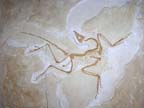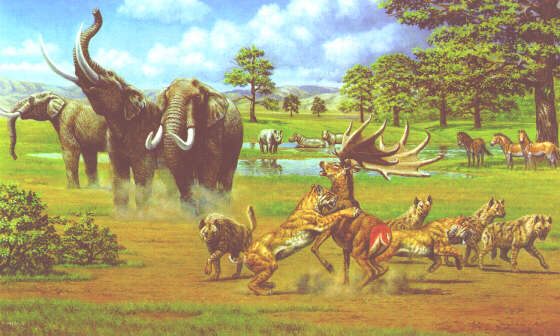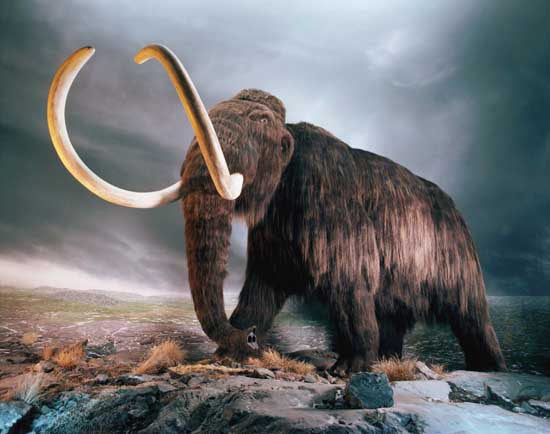 |
 |
 |
 |
 |
Produced
by the Population Genetics and Evolution class, Furman University |
||||
 |
 |
 |
 |
 |
Produced
by the Population Genetics and Evolution class, Furman University |
||||
 |
The
Neogene: Mammoths and Mastodons |
 |
||
| Mammoths are
a diverse group of Proboscidae that fall under the genus Mammuthus
are most closely related to the Asian elephants of today. Their size was
comparable to the largest living elephants; that is, about seven tons
in weight and four meters in height. Both genders had long, curving tusks,
and at least woolly mammoths (M. primigenius) also had dark,
spiraling fur all over their bodies, along with longer front legs that
produced a pronounced downward slope in the back. They were grazing species
that lived in the steppes of the northern hemisphere, and it is hypothesized
that they died out due to climate changes that shifted grasslands south
and reduced their productivity, making it impossible to support mammals
as large as the mammoth. It is also possible that they were hunted to
extinction by Pleistocene Neanderthals and Homo sapiens (Keddie
2009). The genus existed from an estimated four million years ago to roughly
eleven thousand years ago, going extinct following the ice age. During
that time, sevral species diverged across North America, accumulating
successive layers of enamel on their teeth and specializing in browsing
either shrubs, trees, or grasses (The Academy of Natural Sciences 2010).
Mastodons are also part of Proboscidae, but fall instead under the genus
Mammut. Less is known of this less diverse genus, the most prolific
species of which is M. americanus. The main differentiating factor
is the shape of the teeth, which in mastodons were blunt cones better
for browsing, rather than flat as in mammoths (Illinois State Museum 2010). Page by Will Towler |
 |
| Woolly mammoth. Picture from: Wordpress | |
|
Keddie G. 2009. Human History: The Mammoth Story. Royal British Columbia Museum. accessed April 19, 2010. Illinois State Museum. 2010. Mastodon. Illinois State Museum. Accessed April 19, 2010. The Academy of Natural Sciences. 2010. Wooly Mammoth (Mammuthus primigenius). Accessed April 19, 2010. |